Since my last update on new content, in mid-March, I’ve added indexes to over two dozen new monographs and one new online collection. I have a lot more content to process and add, and I’ll just keep plugging away at it, as best I can.
The exciting thing (for me) is that this gets the total number of citations to over 3.4 million now. Especially with print resources, it takes a long time to really move that dial. But I feel like I did, and I’ll keep at it. Now, 3.5 million is next…
There are parts of multi-volume naval histories of the US and Britain, several more Navy Records Society volumes, some passenger list books, and some good non-Anglo/American content, as well. The new content is as follows:
- Boltjes, Piet. Zeemansleed: [Births and Deaths on Board, from 1800 to the Present].
- Boyer, Carl, 3rd. Ship Passenger Lists: National and New England, 1600-1825. Newhall, Calif.: Carl Boyer, 1977.
- Boyer, Carl, 3rd. Ship Passenger Lists: New York and New Jersey, 1600-1825. Newhall, Calif.: Carl Boyer, 1978.
- Boyer, Carl, 3rd. Ship Passenger Lists: Pennsylvania and Delaware (1641-1825). Newhall, California: Boyer, 1980.
- Boyer, Carl, 3rd. Ship Passenger Lists: The South, 1538-1825. Newhall, Calif.: Carl Boyer, 1979.
- Clark, William Bell, ed. Naval Documents of the American Revolution (Vol. 1). Washington, DC: Naval History Division, Department of the Navy, 1964-2013.
- Clowes, W. Laird, Sir. The Royal Navy: A History From the Earliest Times to the Present (Vol. 2). London: S. Low, Marston & Co., 1897-1903.
- Clowes, W. Laird, Sir. The Royal Navy: A History From the Earliest Times to the Present (Vol. 3). London: S. Low, Marston and Co., 1897-1903.
- Footner, Geoffrey M. The Last Generation: A History of a Chesapeake Shipbuilding Family. Solomons, Md.: Calvert Marine Museum Press, 1991.
- Forrester, Robert E. British Mail Steamers to South America, 1851-1965: A History of the Royal Mail Steam Packet Company and Royal Mail Lines. Burlington, Vt.: Ashgate, 2014.
- Gibson, James R., A. A. Istomin, & V. A. Tishkov. Russian California, 1806-1860: A History in Documents. London: Ashgate, for the Hakluyt Society, 2014.
- Grover, David H. American Merchant Ships on the Yangtze, 1920-1941. Westport, Conn.: Praeger, 1992.
- Jones, Ben. The Fleet Air Arm in the Second World War (Navy Records Society, Vol. 159). Burlington, Vt.: Ashgate, 2012.
- Knighton, C. S. , D. M. Loades. Elizabethan Naval Administration (Navy Records Society, Vol. 160). Burlington, Vt.: Ashgate, 2013.
- Maritime Museum of the Atlantic. On the Rocks: Shipwrecks Off the Coast of Nova Scotia. Halifax, N.S.: Province of Nova Scotia, 2007.
- Milner, Marc. Canada’s Navy: The First Century. Toronto: University of Toronto Press, 1999.
- Roskill, S. W. A Merchant Fleet in War: Alfred Holt & Co., 1939-1945. London: Collins, 1962.
- Saul, Norman E. Sailors in Revolt: The Russian Baltic Fleet in 1917. Lawrence, Kansas: Regents Press of Kansas, 1978.
- Seligmann, Matthew S., Frank Na¨gler, and Michael Epkenhans. The Naval Route to the Abyss: The Anglo-German Naval Race, 1895-1914 (Navy Records Society, Vol. 161). Farnham, Surrey: Ashgate, 2014.
- Spencer, George J. S., 2nd earl, Sir Julian Stafford Corbett, and Sir Herbert W. Richmond. Private Papers of George, Second Earl Spencer, First Lord of the Admiralty, 1794-1801, Vol. 1 (Navy Records Society, Vol. 46). London: Navy Records Society, 1913.
- Spencer, George J. S., 2nd earl, Sir Julian Stafford Corbett, and Sir Herbert W. Richmond. Private Papers of George, Second Earl Spencer, First Lord of the Admiralty, 1794-1801, Vol. 2 (Navy Records Society, Vol. 48). London: Navy Records Society, 1914.
- Sutton, Jean. The East India Company’s Maritime Service, 1746-1834: Masters of the Eastern Seas. Woodbridge, Suffolk: Boydell Press, 2010.
- Talbot-Booth, E. C. Merchant Ships (1963 edition). Liverpool: Journal of Commerce and Shipping, 1963.
- Von-Maszewski, W. M. German Emigration Ships to New Orleans, 1865-1869. Pasadena, Texas: The author, 1997.
- Woodman, Richard. Britannia’s Realm: In Support of the State, 1763-1816 (A History of the British Merchant Navy, Vol. 2). Stroud, Gloustershire: History Press, 2009.
- Woodman, Richard. More Days, More Dollars: The Universal Bucket Chain, 1885-1920 (A History of the British Merchant Navy, Vol. 4). Stroud, Gloucestershire: History Press, 2010.

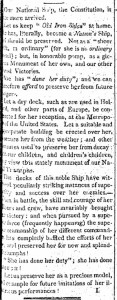
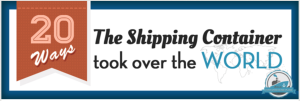
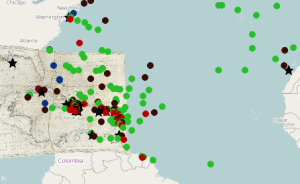
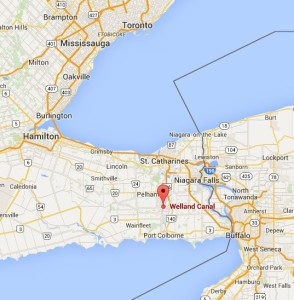
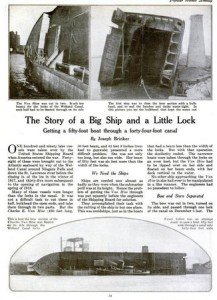 Van Hise went back to work, and then went through a variety of name changes –
Van Hise went back to work, and then went through a variety of name changes – 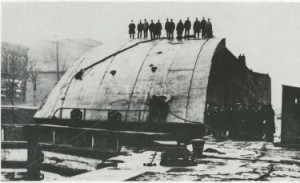 Other links from within ShipIndex.org led me to an entry at Bowling Green’s Great Lakes Vessel Online Index, as well as
Other links from within ShipIndex.org led me to an entry at Bowling Green’s Great Lakes Vessel Online Index, as well as